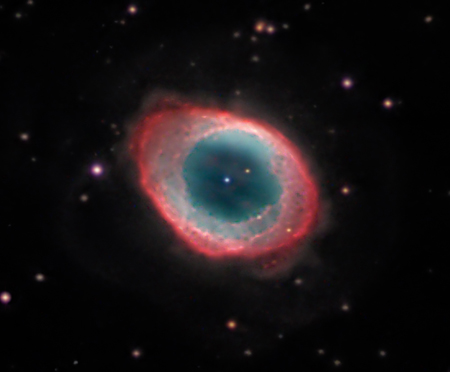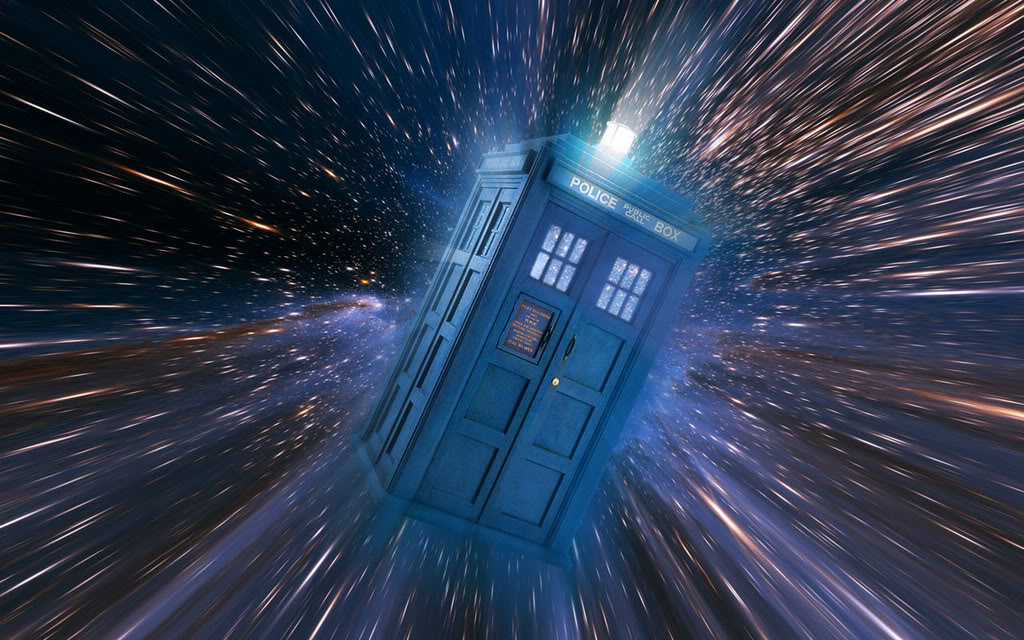A quick primer on space, time, and the immensity of the cosmos.
The objects we are trying to photograph are immensely far away, and often
incredibly faint.
Visually, even in the largest amateur telescopes, most of these objects
are difficult to see, appearing as faint grey smudges showing little detailed
structure, and colour is invisible in all of them, as our eyes are simply
not designed to see colour at low light levels.
However, the colour is there, and so is delicate and beautiful structure.
In order to see it we need to carefully collect this ancient light, and
with the use of technology, make it visible.

Because these objects are so faint, images can sometimes take several months to create, patiently grabbing light, elusive photon by elusive photon, between the necessary evil of work, (astrophotography won't make you rich!), and certainly here in the UK, the unpredictable weather.
Before we begin to see how these images are created, it is important
to go into a bit of background and some basic science.
The more you understand about these objects, the more fascinating they
become, as you begin to have a feeling for the immensity, strangeness
and wonder of the cosmos.
About light, light years, and time.
Light.
Light is made up of photons, and travels at the phenomenal speed of 186,286
miles per second! It's the fastest thing in the universe, and, as Einstein
discovered in his theory of relativity, nothing can go faster.
Light is not only incredibly fast….it's also very weird!
Quantum physics has uncovered a strangeness in the universe, that goes
against all of our earthbound and earth learned reason.
In the world of the very small, the world of subatomic particles, normal
rules do not apply.
What light is made of depends on how you look at it…. if you do an
experiment to find particles, you find that it's made of particles, but
if you do an experiment to discover if it's made of waves, it will appear
as waves!
It's almost as if it knows what experiment is being performed.
I'd say that's a little weird!
You might think that, 'OK, if light travels at 186,282 miles per second,
surely if I'm in my car going down the road at 50mph and I switch my lights
on, then the light coming out of them will be going 186,282 miles per
second, plus 50mph,….got you!'
Wrong!
The light, if measured by you travelling at 50mph, will be travelling
at 186,282 miles per second.
You and the car are in the same frame of reference.
If a person standing by the road, (who is in a different frame of reference
because they are not travelling with you and the car), measures the speed
of light from your headlights as you go past, it will be travelling at
186,282 miles per second for them too!
(And for those who think that their car is fast…. the speed of light,
in miles per hour…670,616,700!!)
This is what relativity is about…. the speed of light is the only constant in the universe, and, in order for it to stay the same from all frames of reference, everything else must change around it, including time and space.
The realisation of this by Einstein was his genius.
Colour.
Sir Isaac Newton. Another genius from a previous age, the first person
to realise that it was possible to use mathematical rules to accurately
describe the way the universe works, and who had thus laid the groundwork
for Einstien's insight, discovered, amongst countless other things, that
white light is not actually white, when he passed light through a prism
and split it into its component colours, known as a spectrum.
The fact that he had discovered that the universe was predictable mathematically
also lead to the use of mathematics to design machines, and the industrial
revolution was inevitable.
Newton's insights lead directly to the world as we know it today.
Light and Colour
For the purposes of colour, we need to regard light as being made of waves.
The longer the wave (wavelength), the more red the light becomes, and
the shorter the wave, the bluer.

Light Years.
Because the universe is so big, using our usual measurements…. miles,
kilometres etc, isn't practical as the numbers are so big.
The measurements we use are based on how long it takes light to cover
a certain distance in a certain time.
The moon is at an average distance from us of 239,000 miles, and it takes
light roughly 1.3 seconds to cover that distance.
The moon is therefore said to be 1.3 light seconds away from us.
The sun is 93 million miles away, and it takes light roughly 8 minutes to cover this distance, so the sun is said to be 8 light minutes away.
Light from the nearest star to us, Proxima Centauri, takes 4.3 years
to get to us.
Proxima Centauri is therefore 4.3 lightyears away.
One light-year equals 5.88 million million miles.
Light from the nearest galaxy, M31, the Great Spiral in Andromeda, takes 2.5 million years to get here.
The most distant object yet seen, GRB090423 was discovered on 23rd April
2009, and is 13 billion light years away.
The universe is vast beyond comprehension.
Space and Time

Sorry…I love Doctor Who!!
The Moon is 1.3 light seconds away from us, this means that when we look
at the moon, we see it as it was 1.3 seconds ago.
Likewise, if the most distant object is 13 billion light years away, then it means we are looking at it as it was 13 billion years ago, way back before the sun or the earth had formed, when the universe was only a 20th of the age it is now.
The further away from you something is in space, the further away in time it is too.
This means that the concept of 'now', only applies on very small scales
where the light travel distance is insignificant, like the earth.
In actual fact though, over any distance there is a time lag, so we are
actually living within our own little isolated bubbles of time, although
the timelag is so close to zero we are unaware of it.